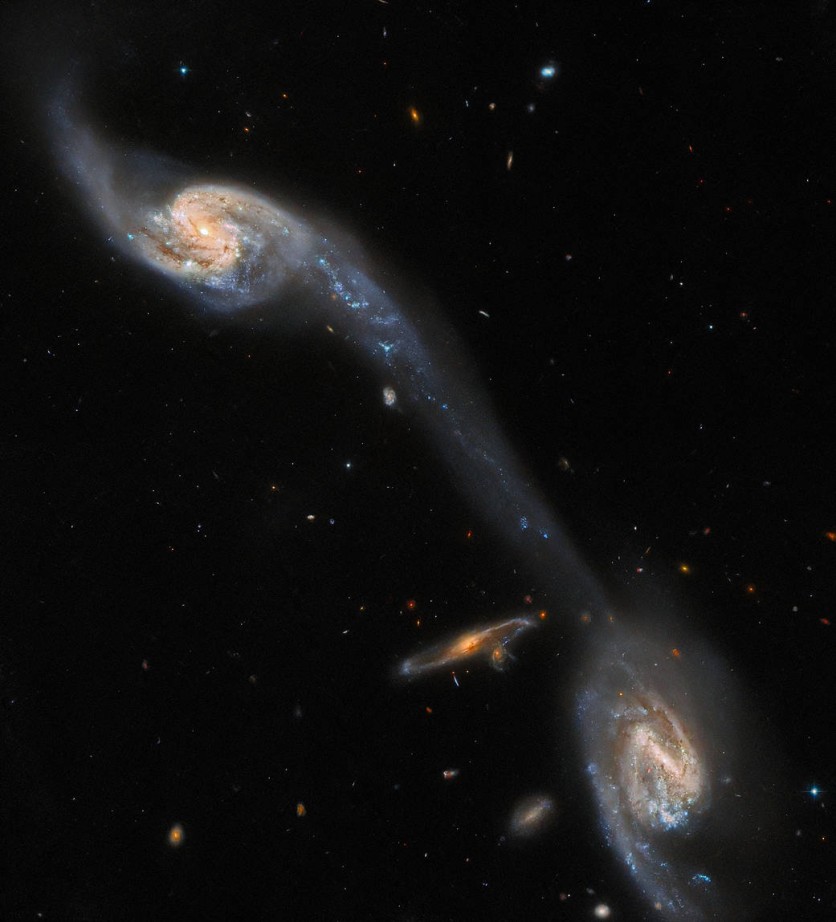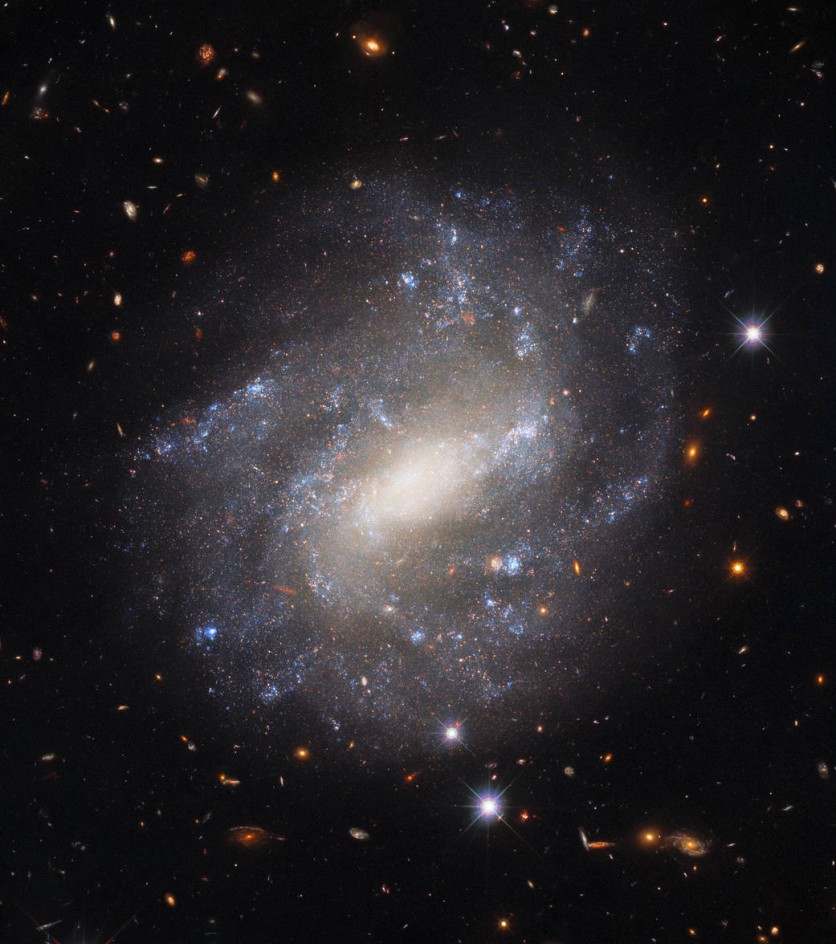NASA's iconic Hubble Space Telescope has witnessed millions of enchanting encounters in deep space and earlier this month, the space observatory has once again spotted a fascinating object. The snapshot features romantic connection between two galaxies connected by a stream of dust, stars, and gas.

Tidal Tails
As reported first by ScienceAlert, Arp 248 is a group of three small interacting galaxies in the constellation Virgo, located about 200 million light-years away. Two of Arp 248's galaxies may be seen in the photograph with a smaller galaxy in the backdrop.
When galaxies like Arp 248 merge, the fusion typically generates streams, which astronomers refer to as "tidal tails." The blue-hued tails, which contain active star formation, are comprised of material from the merging galaxies' outer spiral discs.
The picture was taken as part of a project that looked at two groups of strange galaxies that involve Halton Arp. In 1966, American astrophysicist Arp produced the Atlas of Peculiar Galaxies.
The Atlas is brimming with 338 galaxies that were specially picked for their unique forms. Arp wanted to highlight the wide range of odd shapes that galaxies can adopt.
According to ScienceAlert, these galaxies acquire weird shapes because they are interacting with one another and in the process of emerging. Arp noted that these forms were not made from ejections.
Arp nevertheless knew that astronomers lacked a good understanding of how galaxies develop through time. Hence, he created the Atlas to guide them in understanding the formation and evolution of galaxies.
Catalog of Peculiar Galaxies
A Catalog of Southern Peculiar Galaxies and Associations is the name of the second collection of odd galaxies in the observation project. In 1987, Arp and his coworker Barry Madore published the catalog that contained 25 different kinds of objects, such as galaxies with tails.
Since the Atlas and the Catalog were published, astronomers have gained more insights into the interactions between galaxies and galactic mergers. They also become aware of how mergers are influential in the evolution of galaxies.
According to current estimates, around 25% of all galaxies are currently merging. Harvard Center for Astrophysics noted that more of them are engaging in gravitational interactions or possibly merging altogether.
Lonely Spiral Galaxy
A searing heat was also recently discovered by the Hubble Space Telescope coming from the isolated, brilliant spiral galaxy known as UGC 9391. However, even though it is alone, it acts as a beacon for all astronomers who are tracking the universe's expansion.

In the image, UGC 9391 flexes its starry spiral arms against a background of distant galaxies, which are so far away from Earth that they can only be seen as faint swirls or smudges.
According to the European Space Agency, galaxy UGC 9391 has a variety of fascinating light sources, including cepheid variable stars and a Type IA supernova (ESA). Astronomers can calculate astronomical distances with the help of these sources.
Related Article : NASA's Hubble Space Telescope Captures a Strange Astronomical Explosion Surrounding a Young Star
This article is owned by Tech Times
Written by Jace Dela Cruz
ⓒ 2025 TECHTIMES.com All rights reserved. Do not reproduce without permission.




